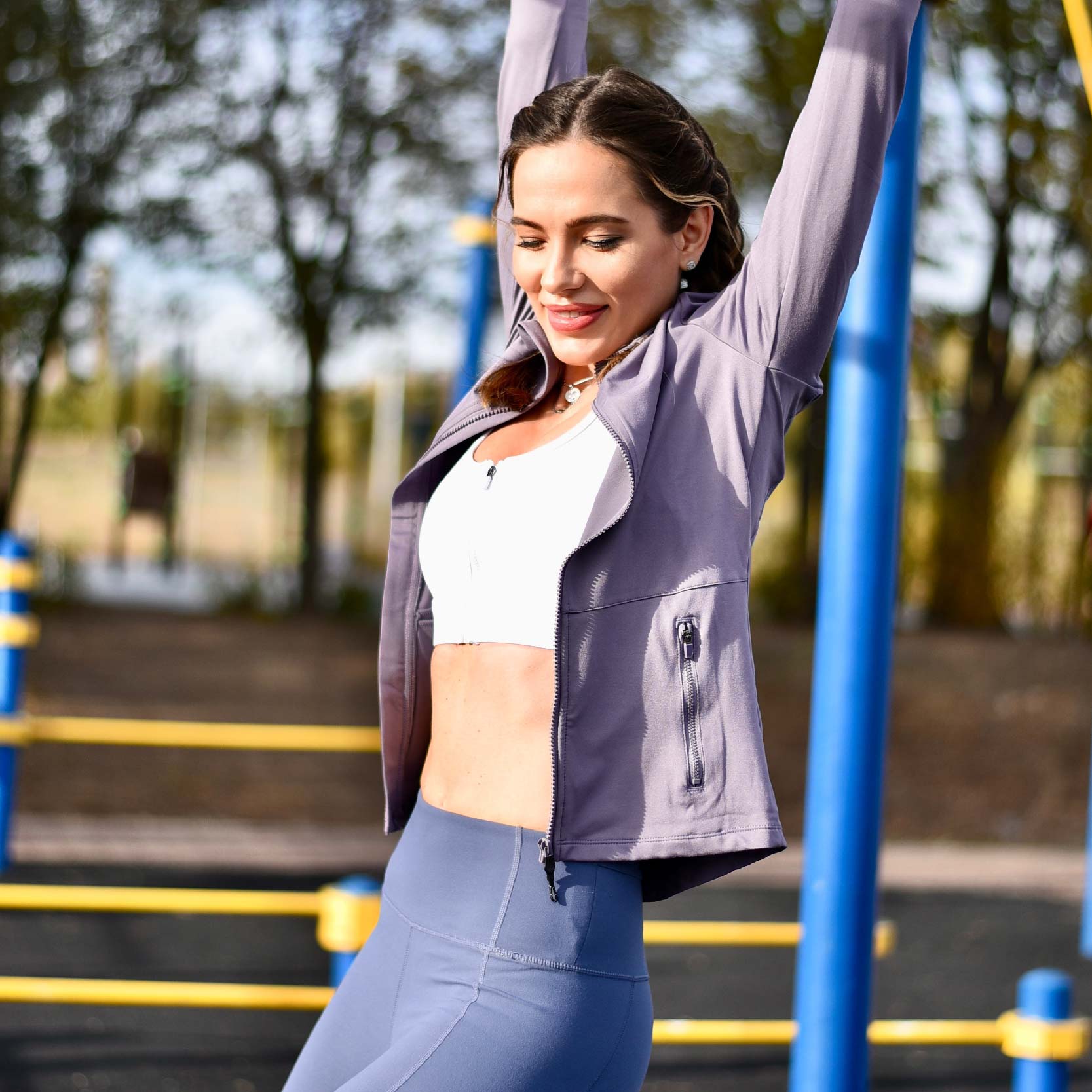Combining Yoga with Other Sports
Yoga and sports are two exceptionally well-liked workout modalities that support the relationship between the mind and the body. Low-impact activity that focuses on calmness and deliberate movement is yoga and Pilates.
It makes perfect sense to combine yoga and Pilates into a complimentary fitness training program because the people who practice them overlap significantly. But combining the health advantages of the two is a sensible thing to do.
In this post, we'll look at how yoga complement can complement other sports and various physical exercises. Read through! There are some advantages of merging the two into a single workout.
You can better comprehend how the two methods might conflict if you are aware of their distinctions. In light of this, you must choose whether to handle yoga or Pilates in a certain way.
7 Sports Yoga Can Complement With
Why complement other sports with yoga? Yoga is beneficial for a variety of sporting activities. Asana is great for increasing your agility and performance, whether you're an athlete, a football player, a volleyball player, a skier, a bodybuilding skater, or any other sports mentioned.
01: Grappling and Brazilian Jiu Jitsu
If you are in technical grappling, yoga helps prevent most of the injuries from happening. Being relatively little and caught up with rivals twice your weight and size makes it a painful experience with sore muscles. The yoga practice keeps you flexible and largely injury-resistant
02: Triathlon
Most triathlon customers have said that yoga has helped them with their workouts and strengthened their knees, lower spines, and calves. Yoga has made many people appreciate triathlons immensely, especially those who are competitive beasts. Incorporating yoga practices into your other routines is the best way to relax your body.
03: Mixed-martial-arts fighter
Mixed martial arts competitors claim that even when on stage, their minds can remain extraordinarily relaxed, centered, and sharper by coordinating their breath. If you can comfortably manage your breathing, you will monitor your opponent and determine when to attack. Inadequate or weak breathing will impact your rival's decision-making. Yoga breathing exercises are essential for maintaining your composure and identifying when your rival lacks it.
04: Skiing or Snowboarding
Sometimes, you may fall if you're relatively new to either sport, regardless of whether you're a seasoned veteran. Falling gets more severe as you increase the difficulty of these activities, which can soon result in physical devastation. It is unpleasant to jar oneself with an intense wipeout if you are stiff in any way in the muscles.
Many people have been spared similar calamities by yoga. If you have a more agile and flexible body, you have a considerably better chance of surviving painful falls without suffering harm.

05: Ninja Body Strength and Movement
Such hazardous activities have a high risk of severe injuries, despite being highly exciting and dangerous. Practicing yoga provides you with an advantage concerning coordination, mobility, smooth landings, adjustments, and perhaps most significantly, some (though not complete) courageous actions.
You should engage in yoga-related activities that will help you do well in the game with minimal injuries.
Please avoid thinking of yoga as a replacement for an activity you appreciate; rather, think of how yoga may improve what you have working in your life. In most cases, it rarely subtracts—yoga improves and adds something to your life!
06: Athletics
Most runners unanimously concur that the yogic routine that involves the coordination of breathing increases their energy levels and helps them with their general endurance running and long workouts.
07: Free-running
The art of free running and parkour, which blend muscular endurance with sports such as gymnastics and primate encounters, may have escaped your notice if you have been underground for the past few years. Yoga can assist you in developing the physical understanding and coordination that are crucial in this situation.

Why You Should Combine Yoga and Strength Training
Just like preparing for a workout, Pilates in your regular yoga practice will increase the class's effectiveness, concentration, and efficiency. Following are the five ways in which yoga might enhance your physical exercise levels:
● Yoga Aids in Better Core Engagement
Yoga practitioners can enhance their core involvement with Pilates. You can include Pilate’s exercises in a yoga routine to help you build your core muscle tissue, boost flexibility in your yoga postures, and enhance your posture. The core response is a component of exercises and yoga.
Through movements that test balance and stability, Pilates places immense value on concentrating and utilizing the core muscles, including the upper abdominal muscles.
Yoga practitioners can focus on activating their pelvic floor muscles in new ways and enhancing general stability in the abdomen by introducing Pilates-style movements into their yoga practice.
● Pilates Assists Yogis in Working the Parts of Their Bodies
Most fitness programs overlook the side body, which includes the obliques, the flexor of the hips, and the intercostals muscles, among others. Performing stretching exercises and training these muscle groups can improve your posture, peace of mind, and general mobility.
Pilate’s workouts, such as the upper-lying leg series, can assist in lengthening and improving the side muscles throughout the body. These types of movements are also adaptable and can integrate into your daily yoga routine by using supports such as structures, buckles, or a wall to enhance side flexion and strain.
In addition, including side-body-focused yoga positions practice, such as the traditional triangle posture or the side stretch, can help increase the range of motion and extend the side-body tissues.

● Yoga Aids in Body Alignment
Both forms of exercise emphasize coordination, and combining Pilate’s movements into a yoga routine can help yogis gain better awareness of their bodies and enhance their posture.
Pilate’s exercises frequently necessitate exact alignment and concentrate on building deep abdominal muscles essential for maintaining appropriate posture and stability. Yoga practitioners can improve their alignment in yoga postures and daily movements by integrating exercises from Pilates into their routines.
Pilate’s movements like the 100 and the single-leg stretch, for instance, can help yogis achieve improved posture and stability while adopting breathing methods can enhance mindfulness of one's body and strengthen the mind-body connection.
● Yoga Aids in Breathing Improvement
Pilates focuses on breathing and includes several techniques for breathing into its physical activity, which can help yogis improve their lung function and ability. This can also aid in developing their awareness and cognition of the airflow, which are vital aspects of yoga practice. Pilates also helps build up the pelvic floor muscles, especially the tissues surrounding the diaphragm, enhancing general breathing efficiency.
● Yoga Enhances Strength Training Aspect
Pilates emphasizes the core power of the muscles, which is essential for maintaining appropriate posture and balance in yoga poses. Furthermore, Pilates focuses on building lighter, underlying muscles, which can increase overall endurance and effectiveness in various yoga positions.

Can Regular Yoga Practice Improve Sports Performance?
Yoga may be an excellent complement to your exercises if you're seeking a creative method to acquire resistance and strength training while increasing flexibility in movement and balancing. Yoga practices blended with other physical exercises can be an ideal cross-training perspective for athletes in all disciplines. Yoga can help athletes improve their breathing methods and their balance, mobility, abdominal power, and endurance.
Yoga's Advantages for Athletes:
Regular yoga practice can help you enhance your competitive skills and general fitness.
01: Improve your deep, calm breathing
If you compete in sports or join a fun run on the spur of the moment, you are conscious of the effect of proper oxygen intake on your body. Generally, deep and easy breathing is the basis for minimizing anxiety and its effects on performance and enhancing concentration.
Yoga will assist you in developing an automatic routine for breathing properly. Sportspeople might profit from this mix of ability development since yoga practice combines the mind-body link.
02: Strengthen Your Core
Yoga positions are primarily about strengthening the core. Slow, deliberate motions necessitate a powerful midsection, and many exercises' isometric contractions will offer a new type of resistance exercise to your regular technical machine-based workouts.
03: Improve your flexibility as well as your range of motion.
Slow, steady stretching techniques are incorporated into yoga regimens, making them perfect for athletes. Yoga training regularly may improve mobility and flexibility while also reducing muscle tension. When you have a flexible range of movement, you will typically increase your performance, whether you are an athlete or a golfer.
04: Improve Your Balance
Yoga is an excellent way to add balancing exercises to your workout regimen. Sometimes athletes disregard body balancing exercises, although they are among the most efficient strategies to repair weak muscles or have difficulties with body mechanics. Many athletic activities and bodybuilding routines involve repetitions that stimulate specific muscles while ignoring others. Yoga can help correct these imbalances.
05: Helps in Cross-exercising
Yoga is an excellent, low-impact form of cross-training. Cross-training is essential for athletes participating in the same activity or fitness program all year. Introducing fresh routines can help you recuperate from rigorous cardiovascular or muscular workouts, avoid injury, eliminate training monotony, and offer diversity.
You can practice yoga at any pace, and countless postures can meet any athletic requirement.
Yoga practices come in different forms and styles, ranging from very fluid, active motions that move from various positions to the next (and lead to a comprehensive aerobic exercise) to more peaceful routines that hold poses for a few minutes and constitute an intense muscle-building and coordination exercise.

Pilates and Yoga Combinations Options
The options are limitless. Here is a framework for combining the two forms of exercise into a unified curriculum. Below are also some specific suggestions for you; here are some Seven ideas for combining Pilates and yoga to help you get started on creating a custom blending program or curriculum.
Warm-up: To condition your muscles for any form of exercise, such as Pilate’s activities, begin the session with a warm-up activity. You can slowly integrate neck bounces, arm loops, and calf turns; such activities will enhance your pace and power
Pilates Exercises: always include Pilates activities in your yoga practice after warming up. The single-leg circle, pelvic tilt, and double-leg release are Pilate’s movements you can adopt and adjust for a yoga class.
Core Muscle Activities: During the Pilates workouts concentrate on the involvement of the core and add core-focused yoga positions such as the paddle stretch or the Warrior III stance.
Deep Breathing: Incorporate breath management strategies from gymnastics and yoga, such as breathing in and out carefully and deliberately or leveraging the sensation of breathing to influence movement.
Body Control and balance: Include balance-centered workouts and movements like the balancing tree posture or the Pilates balance sequence.
Flawless movement: Using Pilates and yoga techniques, move from one specific position to another connecting breath and movement.
Cooling Down: you should finish your physical session with moderate breathing practices
How you integrate the two is determined by your understanding of how the two disciplines strengthen one another and the aspirations that you set for yourself.
Look at your yoga options thoughtfully before engaging in any yoga or physical activity. Ask for input from a group, and experiment extensively with different practices to establish the ideal combination of Pilates and yoga.
Conclusion
Including Pilates and running in a yoga session can result in a more comprehensive and complete workout that benefits the muscles and the mind. While the gyms provide unique Pilates and yoga courses, introducing an extra sporting and yoga program will allow you to strengthen your core strength, develop adaptability, and create greater mind-body integration.
Although yoga is a fantastic exercise, it is not without threats, so you must learn how to avoid yoga injuries.
Even though most of the value of practicing yoga is still reliant on participant input, increasing research is focusing on the positive health effects of yoga.
Regular Yoga activities lower discomfort in the back side, reduce rheumatism discomfort, migraines, and wrist tunnel syndrome, improve heart rate and blood pressure, improve heart rates, and reduce symptoms of insomnia.





